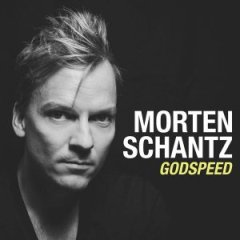Morten Schantz - Godspeed (2017)
Morten Schantz - Godspeed (2017)

01. Morten Schantz - Silence in the Tempest, Pt. I [00:01:07] 02. Morten Schantz - Godspeed [00:07:10] 03. Morten Schantz - Escape Velocity [00:03:04] 04. Morten Schantz - Growing Sense [00:07:43] 05. Morten Schantz - Martial Arts [00:07:50] 06. Morten Schantz - Airglow [00:02:54] 07. Morten Schantz - Ceasefire [00:06:48] 08. Morten Schantz - Cathedral [00:03:28] 09. Morten Schantz - Drill [00:07:36] 10. Morten Schantz - Nuclear Fusion [00:01:15] 11. Morten Schantz - Dark Matter [00:06:32] 12. Morten Schantz - Silence in the Tempest, Pt. II [00:03:30] Morten Schantz - Fender Rhodes; Electric Piano; Sequential Prophet 6; Roland Juno 60; Moog Sub 37; Korg MS-20 mini; Korg Volca Keys; Solina String Ensemble; Waldorf Streichfett; Arturia Beatstep Pro; Upright Piano & handclaps; Marius Neset - soprano and tenor saxophones; Korg MS-10 bass synth on “Martial Arts”; rhodes solo; handclaps Anton Eger - drums, percussion & handclaps
The three Scandinavian musicians featured on Godspeed are also members of the eclectic JazzKamikaze quintet. By 2014, Morten Schantz had released eight albums, four as a soloist and four with JazzKamikaze. Saxophonist Marius Neset has played alongside Django Bates and Anton Eger is also drummer with Phronesis. JazzKamikaze produces a fairly frenetic sound whereas Godspeed is relatively more sophisticated, but no less dynamic. This is Schantz's follow-up to his 2014 recording Unicorn which was predominantly acoustic, whereas Godspeed bears some comparison to his earlier album, 2004's Segment.
The lugubriousness of the short opener "Silence In The Tempest (Part I)," belies what is about to ensue. It rapidly becomes difficult not to compare Godspeed to the many and various incarnations of Weather Report, particularly on numbers like the title track, with Marius Neset's soaring soprano sax prominent. "Escape Velocity" with a heavy bass riff and synth voices all adding to a highly charged atmosphere, invokes an instant reminder of Joe Zawinul's immeasurable contribution to music. This is undoubtedly one of the strongest and most memorable tracks on the album. Both Anton Eger's drumming and Schantz's electric piano work are positively electrifying.
However, not all of these Morten Schantz written compositions are high velocity; the aptly named and languid "Growing Sense" is far from that. The chameleon-like "Martial Arts" intertwines a high-octane vamp with a more wistful one and even manages to insinuate some soulful chord changes.
The short electronic soundscape of "Airglow" contrasts sharply with "Ceasefire" where Schantz himself proves his keyboards virtuosity with a Rhodes solo and Neset pays homage to Wayne Shorter on incandescent soprano. Schantz then reverts to acoustic piano on the languorously elegant "Cathedral."
The erratic "Drill" arguably owes more to JazzKamikaze than anything else and makes excellent use of staccato multi-tracked saxophones whereas "Nuclear Fusion" is more like a Frank Zappa-esque freak out for synths.
The various pulsating electronica meld satisfyingly with analog instruments, specifically tenor sax, on the anthemic "Dark Matter" and the set closes with the elegiac "Silence In The Tempest (Part II)." Godspeed unceasingly rewards repeated plays and easily qualifies as one of the most exciting and engaging recordings for a long time. Schantz has surely now found his true métier. ---Roger Farbey, allaboutjazz.com
Comparing Danish keyboardist Morten Schantz’s new project to Weather Report is a compliment. It’s not just because Joe Zawinul and Wayne Shorter first consummated the relationship between jazz and electricity, setting the tone for all who followed, nor that Schantz favours vintage synthesisers sounds that wouldn’t have been out of place in the 1970s.
It’s also because that central dynamic, between keyboards and saxophone, is played again out in Godspeed. As well, Schantz has his own Shorter in the mercurial Marius Neset, a fluent, fearlessly creative improviser capable of similar levels of invention and subversion.
If there is a difference, it is in drummer Anton Eger’s sequencer-inspired grooves, which give the trio’s music a high-energy, 21st-century edge. ---Cormac Larkin, irishtimes.com
download (mp3 @320 kbs):
yandex mediafire uloz.to cloudmailru gett








